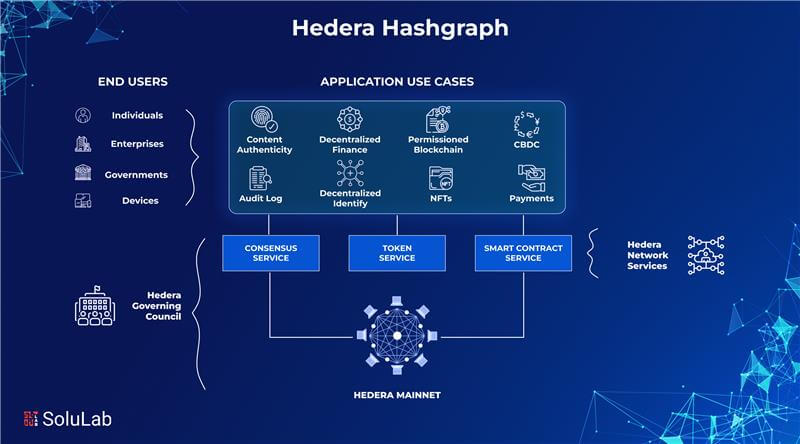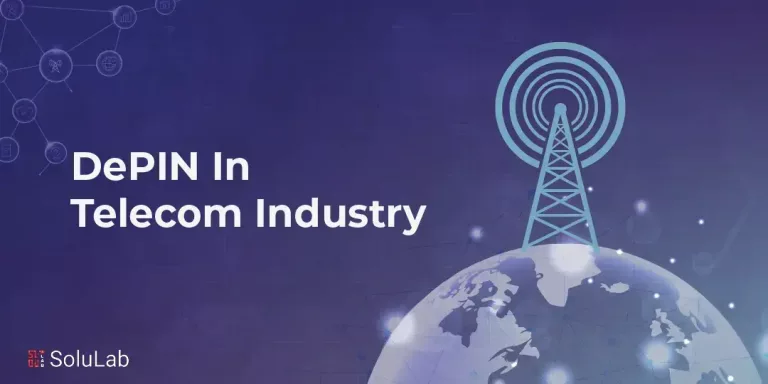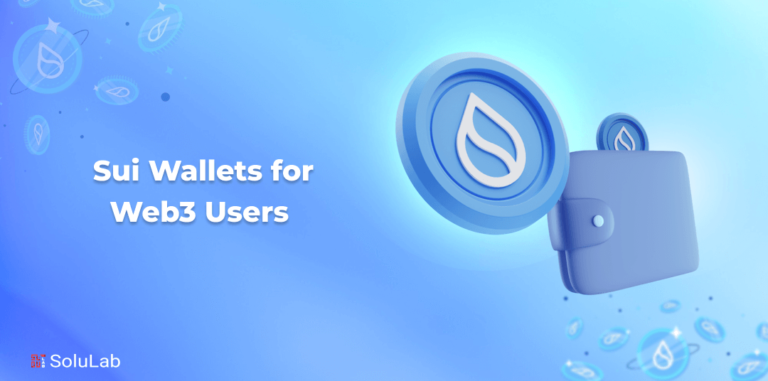
Hedera has established a distinct niche for itself in the present public networks and blockchains. It promises to be among the quickest and safest DLTs on the market, thanks to its inventive consensus algorithm. It was created by Dr. Leemon Baird and uses a novel structure known as a hashgraph, which functions on a directed acyclic graph (DAG). Because of this, Hedera can attain speed and security that are unthinkable for conventional blockchains.
| With a market valuation of over $7 billion as of April 2025, HBAR is selling at about $0.17, indicating rising market acceptance and investor confidence. |
We will look at the reasons behind Hedera Hashgraph’s increasing popularity as a top blockchain choice for 2025 in this article.
What is Hedera Hashgraph?
Hedera Hashgraph exemplifies a type of distributed ledger technology (DLT) that provides an innovative approach to attaining decentralized consensus. In contrast to centralized systems that maintain digital records in a singular location, distributed ledger technology (DLT) facilitates the recording of transaction data across several platforms. Among distributed ledger technology models, blockchain is the most prominent, providing a secure and decentralized method for managing and verifying transactions via a network of computers.
A notable characteristic of Hedera is its remarkably high transaction throughput, facilitated by a method called asynchronous Byzantine Fault Tolerance (aBFT). This algorithm is supported by mathematical validation and does not depend on the resource-intensive proof-of-work (PoW) approach often employed in other blockchain systems. This provides Hedera with a competitive advantage in speed and energy efficiency, rendering it an optimal platform for developers aiming to build on Hedera Hashgraph.
The Hedera Council supervises governance on the Hedera public network. The council members are responsible for maintaining the integrity and operation of the network. Token holders on the Hedera network elect council members who guide the platform’s technological development, authorize new applications, and adjudicate network disputes. Hedera distinguishes itself for developers or organizations contemplating sustainable blockchain infrastructure. It advocates its DLT as more energy-efficient than conventional blockchain systems such as Bitcoin and Ethereum, owing to its aBFT process.
In the aBFT methodology, the network employs “virtual voting nodes” rather than necessitating all nodes to do identical calculations. This virtual voting framework attains consensus effectively, significantly minimizing computing demands and energy consumption. Consequently, platforms developed on Hedera utilize markedly less energy—an appealing characteristic for sustainability-oriented technologies. Collaborating with a reputable Hedera Hashgraph development company may facilitate the realization of your concept through customized assistance and enterprise-level solutions.
How Hashgraph’s Structure Sets It Apart?
Hedera Hashgraph presents a fundamentally distinct methodology for distributed consensus, differentiating it from conventional blockchain systems. Unlike other blockchains that utilize a linear structure to sequentially connect blocks, Hashgraph utilizes a Directed Acyclic Graph (DAG) to concurrently document transactions. This architecture enables the network to execute thousands of transactions per second with exceptional speed and equity, removing the bottlenecks that frequently hinder block-based systems.
Hashgraph significantly lowers energy usage and guarantees expedited finality by eliminating the necessity for miners and circumventing the proof-of-work consensus, all while maintaining security. The structure of Hashgraph makes it highly efficient and scalable.
-
Concurrent Transaction Processing
In contrast to blockchains, which append transactions sequentially in blocks, Hashgraph facilitates the simultaneous recording of numerous transactions. This parallelism results in significantly enhanced throughput and reduced latency, rendering the network appropriate for enterprise-level and real-time applications.
-
Discussion Regarding the Gossip Protocol
Hashgraph employs a “gossip about gossip” protocol, wherein each node disseminates not only transaction information but also the chronology of its data reception. This swiftly constructs a comprehensive representation of the network’s condition across all nodes, minimizing the time and communication burden required to achieve agreement.
-
Digital Voting
Hashgraph utilizes the established history of communications to mimic the voting behavior of nodes, rather than disseminating votes over the network. As each node possesses identical knowledge, they may independently compute the same vote outcomes. This substantially enhances consensus velocity while preserving precision and equity.
-
Asynchronous Byzantine Fault Tolerance (aBFT)
Hashgraph employs an aBFT consensus mechanism, guaranteeing network security despite the potential malicious behavior or offline status of certain nodes. In contrast to conventional blockchain technology that depends on energy-consuming proof-of-work, aBFT uses mathematical assurances to establish trust, facilitating very efficient and secure operations.
-
Prohibition of Forking
Hashgraph totally eliminates forks by timestamping and confirming all transactions through virtual voting. This guarantees a singular version of the truth, enhancing data consistency and reliability, crucial for financial applications and corporate connections.
-
Minimal and Consistent Charges
Due to its efficient architecture and consensus protocol, Hashgraph maintains cheap and steady transaction costs. There is an absence of bidding for block space or erratic congestion pricing, which frequently poses challenges in conventional blockchain settings.
How Does Hedera Hashgraph Stand Out from Traditional Blockchains?
Hedera is not only another blockchain; it is constructed uniquely from the foundation upwards. Although other platforms adhere to comparable concepts, Hedera adopts a distinctive methodology for consensus, scalability, and energy consumption, rendering it an excellent option for practical, business-oriented applications.
Here is a clear breakdown of Hashgraph vs. Blockchain:
| Aspect | Hedera Hashgraph | Traditional Blockchains |
| Consensus Mechanism | Uses asynchronous Byzantine Fault Tolerance (aBFT) and virtual voting. | Relies on Proof-of-Work (PoW) or Proof-of-Stake (PoS). |
| Transaction Speed | Handles 10,000+ transactions per second seamlessly. | Slower performance—Bitcoin does ~7 TPS, Ethereum ~30 TPS. |
| Energy Efficiency | Minimal energy use, making it environmentally friendly. | High energy demand, especially in PoW systems like Bitcoin. |
| Data Structure | Based on a Directed Acyclic Graph (DAG) for parallel processing. | Built on sequential blocks, limiting speed. |
| Governance | Managed by the Hedera Council—global, reputable companies. | Typically controlled by miners, validators, or community votes. |
| Security | aBFT provides strong protection and fast finality. | Security varies; PoW can be vulnerable to 51% attacks. |
| Transaction Finality | Finalizes instantly with no need for multiple confirmations. | Takes time; confirmations are needed to ensure finality. |
| Fork Resistance | No forks—ensures a consistent, unified network history. | Forks happen regularly (e.g., Bitcoin Cash, Ethereum Classic). |
| Fee Model | Predictable, low-cost fees for all transactions | Fees vary and often rise during peak usage. |
If you’re still evaluating Hashgraph vs blockchains for your next project—especially from a performance and sustainability perspective—understanding their key differences can help you align with your business goals.
Real-World Use Cases of Hedera Hashgraph
Hedera Hashgraph is not only an efficient alternative to traditional blockchains; it is a multifaceted, enterprise-level network that facilitates real-world use cases across several sectors. Hedera facilitates the development of efficient, scalable, and secure decentralized apps for businesses and developers with its rapid throughput, minimal fees, and robust governance.
Below are many pivotal blockchain use cases in which Hedera Hashgraph is exerting considerable influence:
Real-World Assets Tokenization
Hedera serves as an optimal platform for the asset tokenization of real estate, commodities, art, and various physical or digital assets. Its predictable costs and non-forking characteristics provide it a dependable option for establishing safe fractional ownership systems and regulated asset exchanges—fundamental elements of most Hedera Hashgraph enterprise solutions.
Supply Chain and Provenance Monitoring
Companies utilize Hedera to develop tamper-resistant tracking systems across medicines and agriculture. The timestamped, immutable ledger of Hashgraph guarantees transparency and accountability across the whole supply chain lifespan.
Decentralized Identity (DID)
Hedera facilitates verifiable credentials and identification solutions that empower consumers to manage their personal data. These are employed in industries like as healthcare, banking, and education to mitigate fraud and improve privacy.
Micropayments and Financial Services
Due to its cheap and steady transaction costs, Hedera is well-suited for microtransactions, making it great for gaming, streaming, IoT services, and content monetization platforms. Fintech firms utilize Hedera for safe, instantaneous payments and transfers.
ESG and Carbon Tracking
Hedera’s sustainable infrastructure is utilized by environmental programs to tokenize carbon credits, monitor emissions, and authenticate green initiatives—providing an effective and transparent solution for ecological accountability.
Non-Fungible Tokens and Digital Collectibles
Artists and brands are utilizing Hedera for NFT minting because of its energy efficiency and rapid transaction rates. In contrast to other platforms, Hedera’s network guarantees equitable access and an enhanced experience for producers and collectors.
For businesses aiming at building safe and scalable apps, collaborating with a reputable Hedera Hashgraph development company may actualize your vision, regardless of whether your focus is on capital, identity, or sustainability.
Why Hedera Is a Smart Bet for 2025?
The Hedera Hashgraph is among the best investments you can make in 2025 if you’re looking at top blockchain platforms for a practical enterprise. Hedera has gradually established itself as a dependable, high-performance network designed for real use, not just speculation, while many platforms are still resolving issues with scalability and energy consumption.
It is perfect for applications that require speed and reliability since it can handle thousands of transactions per second with nearly instantaneous finality and fixed low costs. Hedera can manage digital identification, supply chain monitoring, and micropayments without the slowness and exorbitant costs that sometimes beset other blockchains.
Furthermore, it is already supported by well-known corporations like Google, IBM, and Boeing through the Hedera Council, demonstrating that this is not merely another experimental platform. More and more companies are using Hedera Hashgraph development services to realize their ideas for scalable, secure app launches. Hedera is more than simply a smart blockchain; it’s a wise investment for the future, thanks to its reliable technology, robust governance, and expanding user base.
The Bottom Line
As the blockchain industry develops, initiatives are being evaluated more and more on the basis of governance, performance, energy efficiency, and practical usability in addition to excitement. Hedera Hashgraph distinguishes itself by fulfilling all of those requirements and providing a secure, scalable, and long-lasting digital application base. For both startups and established businesses, 2025 appears to be the year when Hedera transitions from being “the alternative” to “the standard.”
We at SoluLab assist companies in realizing robust blockchain solutions. OBORTECH Smart Hub, one of our most recent initiatives, offers Blockchain-as-a-Service (BaaS) to streamline business blockchain installations on AWS, Google Cloud, and Azure.
Being a top blockchain development company, we help businesses at every stage of the process, from strategy to implementation, making sure your product is not only useful but also prepared for the future.
Ready to build with Hedera Hashgraph or explore blockchain possibilities for your business? Contact our team, and together, we can transform your concept into a scalable solution that will be noticeable in 2025 and beyond.
FAQs
1. What is Hedera Consensus Service (HCS)?
Hedera Consensus Service (HCS) allows applications to submit messages to the Hedera network for consensus ordering and timestamping. It’s ideal for use cases like auditing, event tracking, and secure logging, where trusted and verifiable data ordering is essential—without needing to store the actual data on-chain.
2. Is Hedera Hashgraph suitable for enterprise applications?
Yes, Hedera is built to serve enterprise needs with high performance, low and predictable fees, and governance led by a global council of leading companies. It supports use cases like asset tokenization, digital identity, and supply chain visibility at scale.
3. Why is Hedera considered an eco-friendly blockchain option?
Hedera uses an energy-efficient consensus algorithm (aBFT) that doesn’t require mining. This results in a significantly lower carbon footprint compared to traditional blockchains like Bitcoin or Ethereum, making it one of the greenest DLTs available today.
4. Can I build custom blockchain solutions on Hedera?
Yes, developers can create powerful, tailor-made applications on Hedera using its open SDKs and APIs. From tokenized assets to identity verification and payment systems, Hedera supports a wide range of custom blockchain solutions on Hedera for both startups and enterprises.
5. How can SoluLab help with Hedera-based development?
As a trusted Hedera Hashgraph development company, SoluLab offers end-to-end services—from consulting and architecture to development and deployment. We help businesses use Hedera’s speed, security, and sustainability to build future-ready decentralized applications.





